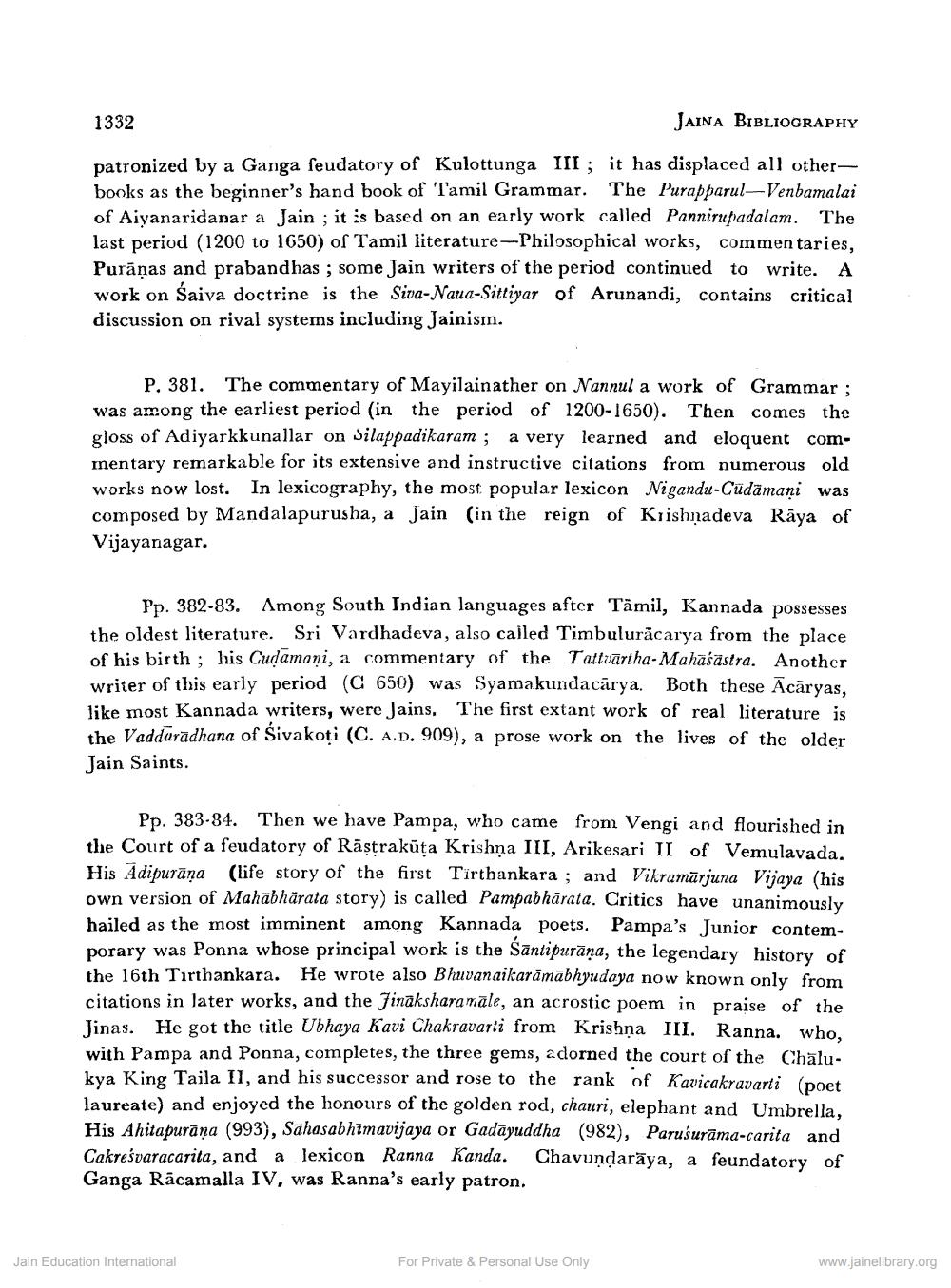________________
JAINA BIBLIOGRAPHY
patronized by a Ganga feudatory of Kulottunga III; it has displaced all otherbooks as the beginner's hand book of Tamil Grammar. The Purapparul-Venbamalai of Aiyanaridanar a Jain; it is based on an early work called Pannirupadalam. The last period (1200 to 1650) of Tamil literature-Philosophical works, commentaries, Puranas and prabandhas; some Jain writers of the period continued to write. work on Śaiva doctrine is the Siva-Naua-Sittiyar of Arunandi, contains critical discussion on rival systems including Jainism.
1332
P. 381. The commentary of Mayilainather on Nannul a work of Grammar; was among the earliest period (in the period of 1200-1650). Then comes the gloss of Adiyarkkunallar on Silappadikaram; a very learned and eloquent commentary remarkable for its extensive and instructive citations from numerous old works now lost. In lexicography, the most popular lexicon Nigandu-Cüdämani was composed by Mandalapurusha, a Jain (in the reign of Krishnadeva Raya of Vijayanagar.
Pp. 382-83. Among South Indian languages after Tamil, Kannada possesses the oldest literature. Sri Vardhadeva, also called Timbuluracarya from the place of his birth; his Cudamani, a commentary of the Tattartha-Mahalastra. Another writer of this early period (C 650) was Syamakundacārya. Both these Acaryas, like most Kannada writers, were Jains. The first extant work of real literature is the Vaddaradhana of Sivakoti (C. A.D. 909), a prose work on the lives of the older Jain Saints.
Pp. 383-84. Then we have Pampa, who came from Vengi and flourished in the Court of a feudatory of Rästrakūta Krishna III, Arikesari II of Vemulavada. His Adipuräna (life story of the first Tirthankara; and Vikramarjuna Vijaya (his own version of Mahabharata story) is called Pampabharata. Critics have unanimously hailed as the most imminent among Kannada poets. Pampa's Junior contemporary was Ponna whose principal work is the Santipurana, the legendary history of the 16th Tirthankara. He wrote also Bhuvanaikardmabhyudaya now known only from citations in later works, and the Jinaksharamale, an acrostic poem in praise of the Jinas. He got the title Ubhaya Kavi Chakravarti from Krishna III. Ranna. who, with Pampa and Ponna, completes, the three gems, adorned the court of the Chalukya King Taila II, and his successor and rose to the rank of Kavicakravarti (poet laureate) and enjoyed the honours of the golden rod, chauri, elephant and Umbrella, His Ahitapurana (993), Sahasabhimavijaya or Gadayuddha (982), Paruiurama-carita and Cakreśvaracarita, and a lexicon Ranna Kanda. Chavundaraya, a feundatory of Ganga Râcamalla IV, was Ranna's early patron.
Jain Education International
For Private & Personal Use Only
www.jainelibrary.org




